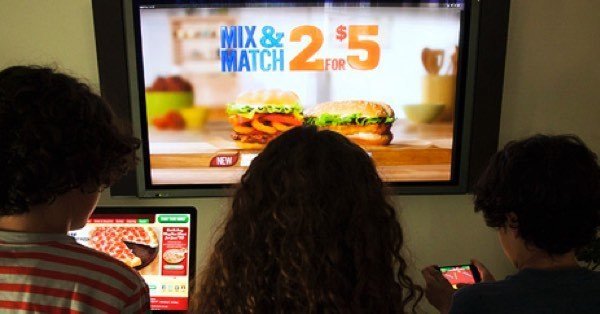Most Kiwis seem to agree – as a matter of principle, there should be no junk food advertising aimed at children. A recent poll found that 72% wanted stronger restrictions on junk food advertising to kids.
The question is how you define “junk food”, “advertising” and “aimed at children”. This is the subject of some discussion amongst experts at the moment as the Advertising Standards Authority is reviewing its guidelines. In this blog we will explore some of these issues.
What do you think – where should we draw the line? You can submit to the ASA here, or share your examples of advertising to kids which you think are crossing the line.
Examples
Before looking at definitions of “junk food”, “advertising” and “aimed at children”, it can be easier for a lot of children to start by looking at what they think is or isn’t acceptable at the moment. Here are some examples we have seen:
- Is it appropriate to have any advertising of junk food in school grounds? What about close to schools – billboards, dairy signage and prominent display of junk food in dairies around schools? We know that dairies and fast food joints cluster around schools – particularly in poor neighbourhoods. Should some junk foods that are clearly not appropriate for children (such as energy drinks and energy shots) be advertised or sold near schools at all?
- We have personally experienced Coke promotions handing cans of Coke to children under 5. Should they have to ask parents permission first? Or should this practice be banned outright? Currently promotions are not covered by the ASA code so they slip through the net.
- Should junk food vouchers be given our as rewards, e.g. for sports teams player of the day?
- Should companies use cartoon characters on the packaging of junk food? Again this isn’t covered by the code but should be as packaging is clearly a form of advertising. There are many examples of this – e.g. Coco Pops, Dora and Thomas the Tank Engine “yoghurts” and dairy foods. This is a major source of pester power in supermarkets.
- As we have talked about before – one third of the products promoted in the New World Little Shop giveaways are junk food. While we don’t oppose giving toys away, should those toys imply that junk food is a third of our diet?
Junk Food
What is “junk food”? The Healthy Star Rating (HSR) scheme provides a useful starting point for rating food nutrition but it is rather lenient on certain foods and nutrients such as sugar. We know for sure that anything with less than 2 stars is definitely junk food, but the findings of the NSW Government review of the HSR system compared to existing eating guidelines suggested that the threshold could be as high as 3.5 stars.
Given there is such a large grey area under the HSR should we take a bit more care? We would argue for that for children we should take the precautionary approach, and for that reason that the definition of “junk food” should be set at the threshold of 3.5 stars.
Advertising
From the examples above, this clearly needs to be broader than the current code. The definition of advertising needs to include online, packaging, signage around schools, sports sponsorship, prizes and giveaways. It is all advertising, so stop hiding behind the definition.
Aimed at children
What is an advert aimed at children? It can be a complex issue. Currently the proposed definition of a child is under 14 years.
We’d all probably agree it should include any ad that is clearly targeted at children, including those using of cartoon characters or children’s role models.
But how far does that extend? The All Blacks are children’s role models – is anything they are involved with advertising to children? We think so. There is an element similar to the drinking legislation here (if you look under 25 we’ll check). Kids tend to role model those slightly older than them, so an ad arguably aimed at 15 year olds is also likely to appeal to 14 year olds. The age should be higher to reduce this grey area. The age should be 18 to be consistent with the age of leaving school and drinking.
What about any ad that is viewed in a context that is either targeted at children or by an audience that is disproportionately made up of children? For example, it could be delivered on a website, TV or radio programme that is targeted at kids or has a disproportionate child audience, or in a place that has a majority of children in its clientele. Again, how far would this apply? For the avoidance of doubt we think it should include schools and a 300m radius around the school.
Of course the Food Industry are unlikely to entertain such stringent provisions. But good on the Advertising Standards Authority on being willing to talk and consult. We look forward to seeing the results.

